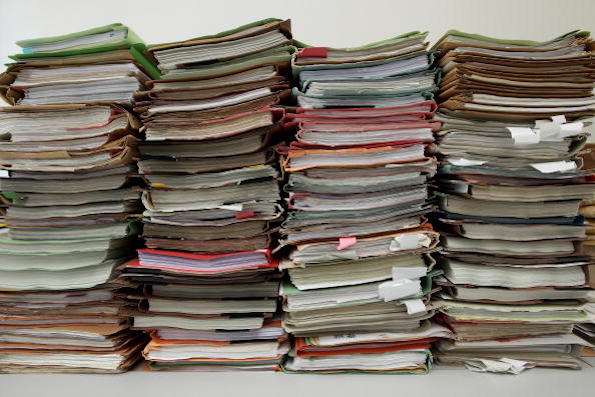Going paperless in 2016: What tools are working for you?Going paperless in 2016: What tools are working for you?
It's fine to go digital with to-do lists, calendars, notes and other formerly pulp-driven endeavors. But do digital solutions really deal with the way we live and work?
January 14, 2016

Back in the before time, whenever I went to big tech events, I usually ended up hauling home a bag full of nothing but press kits and filled-up notebooks.
This past week, I spent five days in Las Vegas at CES 2016. Although I packed four trusty reporters' notebooks and left plenty of room in my bag for press materials, I came home with all of four pages of handwritten notes and a still-capacious satchel.
Credit the slow creep of paperless tools that get how we work. Instead of a bag full of press kits, I have a mason jar full of thumbnail drives and business cards with a press kit URL on the back. Instead of scribbling frantically across pages of notebooks, I recorded all my interviews with my phone, took all my pictures with it, and wrote up everything else on a laptop computer. The MVP for my CES toolkit? A cloud storage account for keeping all my photos, recordings and first drafts in one easily-accessible place.
For me, one of the small pleasures of CES was watching how other people did CES as a paperless event. Smartphones were out everywhere as people snapped pictures; I saw lots of people scribbling on their Android tablets; I watched others use their phones to conduct every commercial transaction.
To be sure, the paperless life isn't a hundred percent there. For example, I am still reluctant to abandon a paper calendar. Don't get me wrong, I appreciate Outlook's calendaring abilities -- it's great for blocking out time, arranging meetings, and reminding one of upcoming commitments. And one thing I appreciate about the shared Google Calendars I'm on is how they're all color-coded, so I can quickly and easily see where my free time is going.
But I have yet to use a digital calendar that includes the same "free" space as my favorite weekly planner -- the days on one half of the page, the other an empty page for writing to-dos, taking notes or logging whatever you please. For me, that blank page is essential, because it allows me to easily add and quickly scan information about my commitments or upcoming events. And at home, we rely on a big, old-fashioned deskpad calendar. A shared Google calendar rises and falls on the participation of everyone it's supposed to affect. That works for some households; our three-generation setup has had more success in coordinating everyone's comings and goings on a giant piece of paper.
My ideal, paperless system would let me selectively edit the data from any shared calendars, my private calendar and my workplace calendar, then mash it all into one screen, complete with an accompanying blank pane for drawing, taking notes or writing to-dos. And just writing out this wish point out the fundamental paperless world challenges: Finding streamlined solutions that don't erase or ignore the fact that we don't often live a hermit-like life with everything tidily sorted and categorized.
Personal computing is also social computing. As people, we move fluidly between private or personal tasks (booking a doctor's appointment) and social ones (arranging a meeting with your colleagues, moving your child's violin lesson for a week). The loose structure of old paper solutions -- blank papers or bare-bones calendars -- let us define our own boundaries between different types of tasks and define the types of useful information we needed to include in our daily goings-on.
Tell us in the comments about where you've gone paperless -- and where you're still holding on. What works for you? And why does it work?
About the Author
You May Also Like








.jpg?width=700&auto=webp&quality=80&disable=upscale)
